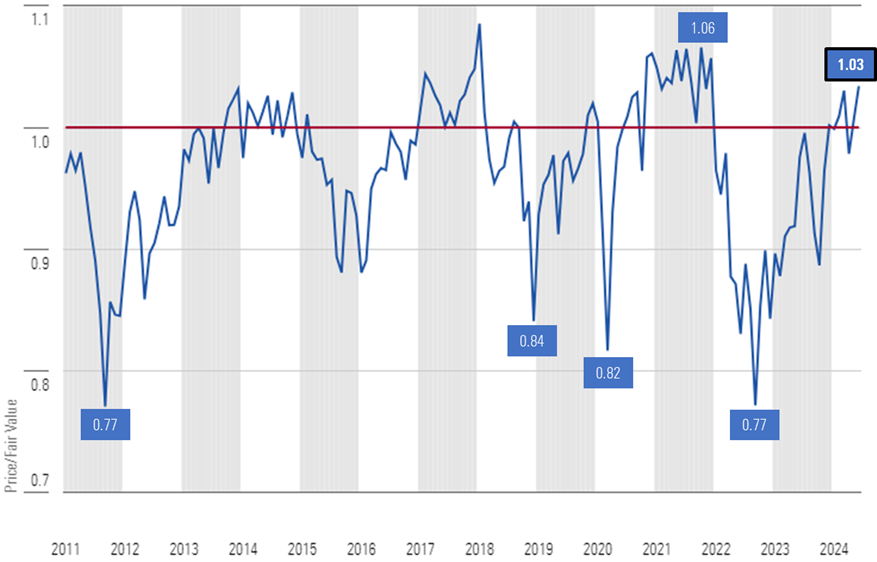Assessing the AI and machine learning (ML) models used by stock prediction and trading platforms is essential to ensure that they provide accurate, reliable and useful insights. Poorly designed or overhyped models could result in inaccurate predictions and financial losses. Here are ten of the best ways to evaluate the AI/ML models of these platforms.
1. Understand the Model's Purpose and approach
Clear goal: Determine whether the model was created to be used for trading in the short term, long-term investment, sentiment analysis or for risk management.
Algorithm disclosure: Check if the platform discloses which algorithms it uses (e.g. neural networks and reinforcement learning).
Customizability: Determine if the model can be customized to suit your particular investment strategy or risk tolerance.
2. Evaluate the performance of your model using by analyzing the metrics
Accuracy. Check out the model's ability to forecast, but do not depend on it solely, as this can be false.
Recall and precision: Determine whether the model is able to identify true positives, e.g. correctly predicted price changes.
Risk-adjusted returns: Determine the likelihood that the model's predictions will result in profitable trades after taking into account risk (e.g., Sharpe ratio, Sortino ratio).
3. Test the Model by Backtesting it
Backtesting your model with previous data lets you compare its performance with previous market conditions.
Check the model against data that it has not been taught on. This will help stop overfitting.
Analysis of scenarios: Check the model's performance during different market conditions (e.g. bear markets, bull markets high volatility).
4. Make sure you check for overfitting
Overfitting Signs: Look out for models which perform exceptionally well when trained but poorly with untrained data.
Regularization techniques: Determine the application uses techniques such as L1/L2 regularization or dropout to prevent overfitting.
Cross-validation: Ensure the platform uses cross-validation to determine the generalizability of the model.
5. Examine Feature Engineering
Check for relevant features.
Make sure to select features with care Make sure that the platform will include statistically significant data and not redundant or irrelevant ones.
Dynamic feature updates: Find out whether the model will be able to adjust to market changes or to new features as time passes.
6. Evaluate Model Explainability
Interpretability (clarity) It is important to check that the model is able to explain its assumptions clearly (e.g. the value of SHAP or the importance of features).
Black-box models cannot be explained: Be wary of platforms using overly complex models including deep neural networks.
User-friendly Insights: Make sure that the platform provides useful information in a format that traders can easily understand and use.
7. Examining the Model Adaptability
Changes in the market: Check whether the model is able to adapt to changes in market conditions, such as economic shifts, black swans, and other.
Continuous learning: Make sure that the platform is regularly updating the model by adding new information to enhance the performance.
Feedback loops. Make sure that your model takes into account feedback of users and actual scenarios to enhance.
8. Check for Bias or Fairness
Data bias: Ensure that the training data you use is a true representation of the market and is free of biases.
Model bias - See whether your platform is actively monitoring the biases and reduces them in the model predictions.
Fairness: Check whether the model favors or not favor certain types of stocks, trading styles or even specific sectors.
9. Evaluation of Computational Efficiency
Speed: Check if the model can generate predictions in real-time or with low latency, particularly for high-frequency trading.
Scalability: Verify whether the platform is able to handle large datasets and multiple users without affecting performance.
Resource usage: Check whether the model makes use of computational resources effectively.
10. Transparency and Accountability
Documentation of the model. Ensure you have detailed documents of the model's structure.
Third-party audits: Check whether the model was independently verified or audited by third-party audits.
Error Handling: Determine if the platform has mechanisms to identify and correct mistakes in the models or in failures.
Bonus Tips
User reviews and Case Studies User reviews and Case Studies: Read user feedback and case studies to evaluate the actual performance.
Trial period - Use the free demo or trial to test out the model and its predictions.
Support for customers - Make sure that the platform you choose to use is able to offer a solid support service to help you resolve technical or model related issues.
Check these points to evaluate AI and ML models for stock prediction and ensure they are trustworthy and clear, and that they are compatible with trading goals. Have a look at the most popular best ai for trading for site examples including chatgpt copyright, incite, ai investment app, AI stock trading app, ai for stock trading, best ai trading app, AI stock trading app, investment ai, stock ai, ai for trading and more.

Top 10 Tips For Evaluating The Social And Community Features Of Ai Platform For Predicting And Analyzing Stocks
It is important to understand how users interact, share knowledge and gain insights from each other by analyzing the social and community capabilities of AI-driven prediction and trading platforms. These features can improve the user's experience and provide valuable help. These are 10 top ways to assess the social and community aspects of such platforms:
1. Active User Group
Tips: Make sure the platform has a active community of users who regularly participate in discussions, provides insights and feedback.
Why an active community? A community that is active indicates a vibrant environment that allows users to develop and learn from one another.
2. Discussion forums and boards
Tips: Examine the level of engagement and the quality in discussion forums or message boards.
Forums are a great way for users to ask questions, talk about strategies and market trends.
3. Social Media Integration
Tip: Check if the platform integrates with social media channels for sharing news and insights (e.g. Twitter, LinkedIn).
Why: Social media integration can boost engagement and give actual-time market information.
4. User-Generated Content
Look for features which allow you to create and share content. For instance, you can create blogs, articles or trading strategies.
Why? User-generated content promotes collaboration and gives a range of perspectives.
5. Expert Contributions
Tips - Make sure the platform has contributions from experts in the field, like market analysts and AI specialists.
The reason: Experts' opinions add credibility and depth to community discussions.
6. Real-Time Messaging and Chat
Check if there are any instant messaging or chat functions that allow users to communicate immediately.
What's the reason? Real-time interactions allow for quick information exchange and collaborative work.
7. Community Moderation Support
Tip: Evaluate the level of support and moderation provided by the community.
The reason: Moderation is essential to ensure a positive and friendly environment. Support is available to help users resolve their issues as swiftly as is possible.
8. Events and Webinars
Tips - Make sure to check whether the platform provides live Q&A with experts, webinars and events.
The reason: These events provide opportunities to engage in direct conversation and learning with industry professionals.
9. User Reviews
Tips: Search for features that let users leave feedback or reviews about the site and its community features.
What is the purpose: Feedback from users helps identify strengths and areas of improvement in the community environment.
10. Gamification and Rewards
Tips. Make sure the platform has gamification features (e.g. leaderboards, leaderboards and badges) and rewards for engaging in the game.
Gamification can encourage users and community members to become more active.
Bonus tip: Security and privacy
Make sure that the community and social features are protected by privacy and security measures to protect user data and interactions.
By thoroughly assessing these aspects, you can determine whether you think the AI stock prediction and trading platform has an active and friendly community that will enhance the experience of trading and your understanding. Read the top rated stock predictor examples for website examples including stock trading ai, best ai penny stocks, AI stock trader, free AI stock picker, best ai for stock trading, ai software stocks, ai investment tools, AI stock prediction, ai tools for trading, AI stock predictions and more.
